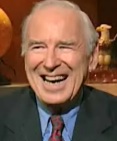Non-verbal communication. Body language. Etcetera.
If you are like me, you have heard things about how important it is, how non-verbals matter more than verbals in conversations, how the majority of our communication meaning is due to the things we do rather than say, stuff like that.
OK, so what are we to do with that information, exactly?
I remember when I first heard a statistic about how 67 or 55 or 84 percent of our communication comes from body language (the stat fluctuates depending on the messenger—source cite much?) Exploring it opened my world.
Wondering if it were true I felt paralyzed, because unlike verbal communication, body language is something I was never taught. Yes, I enjoyed language of the wordish variety, but I wanted deeper understanding and mastery of the whole genre of presenting.
My life-long trek to learn how to be a better communicator began in elementary school when I wrote myself a part in some school play. By the time I graduated high school, top grades in a speech or acting class meant more to me than anything else in school. I was in all the plays I could manage and gave a shot or two at standup comedy. (By the way, if you think you are funny, try standup comedy. It makes you think you are not.)
So here are three easy non-verbal tips to try in your next presentation or speech.
- Don't just do something, stand there. Nothing is more frustrating for an audience than watching a fake, so stop thinking and planning about what to do with your hands and just let them chill out. When you are in the moment and connecting with your messages, your body follows naturally.
- Stand tall. Give yourself a couple little stretches for your shoulders and back before you step up front so you are reminded to stand tall. A slouching speaker is demoralizing.
- Walkie-talkies are for Rosco P. Coltrane. When you have a key message to deliver, stand still and deliver it. Walking while talking only works when it is purposeful (ex. moving to a new spot to begin a new idea, or moving to demonstrate an action in a story). When you have a powerful point, stand in one place and deliver the line.
Body language and non-verbals are not the core of our message (see Albert Mehrabian and the myth of the 55/38/7 rule) but they do accentuate or weaken our impact.







